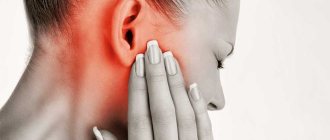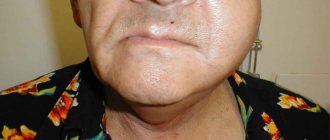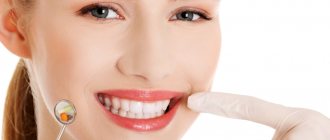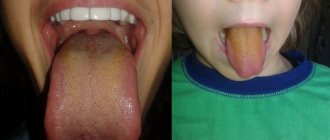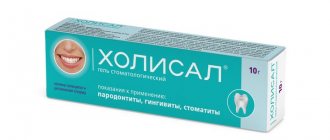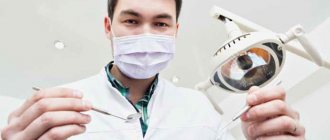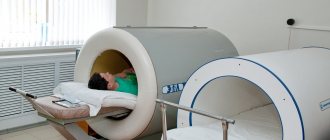Composition of levomekol
The action of the drug is based on two components: chloramphenicol and methyluracil. The first substance belongs to the group of antibiotics (chloramphenicol derivative). It is active against gram-positive and gram-negative microorganisms (intestinal, Pseudomonas aeruginosa, staphylococci, streptococci). The second component is an immunostimulating substance , a stimulator of regeneration of damaged tissues.
The manufacturer of the medicine is the Russian pharmaceutical company Nizhpharm, the best in the production of ointments and suppositories.
Properties
Based on its constituent components, the medicine has the following properties:
- antibacterial and antimicrobial, and the strength of action does not decrease in the presence of necrosis (tissue death) and pus;
- stops inflammatory processes;
- stimulates the healing of damaged tissues.
The medicine helps with infected wounds caused by any gram-negative or gram-positive microorganism. It helps eliminate suppuration on the gum or in the gum pocket.
To maximize the preservation of the beneficial properties and effectiveness of the ointment, it must be stored in the refrigerator, protected from exposure to light and moisture.
Rinse
Mouth rinsing is one of the answers to the question of how to remove gumboil at home. For this purpose, various decoctions, tinctures and medicinal solutions are used. Before using any mouthwash, you should consult your doctor.
Let's look at the most effective types of solutions that can be used to remove flux by rinsing:
A freshly prepared decoction based on oak bark works well as an excellent mouth rinse for flux. To prepare this product, you must purchase at least twenty grams of dry oak bark. You can stock up on it in the summer or purchase it at the pharmacy. Measure out about twenty grams of dry and pre-crushed oak bark and pour half a liter of boiling water. Everything is put on fire and boiled for two minutes, and then put in a secluded place to infuse. It is recommended to rinse your mouth with cooled oak broth at least eight times a day;
Oak bark.- Calamus root. Effective in the fight against gumboil and its manifestations. After grinding twenty grams of dried calamus root, pour half a liter of hot water. Everything is removed for several hours to infuse and cool. It is recommended to rinse your mouth with calamus root after meals throughout the day. On average, the number of rinses should not be less than five times per day. The last time this rinse is recommended is before bedtime;
For flux, you can use a decoction based on rue. You need to stock up on a small amount of this herb and brew it in a glass of boiling water. After steeping for twenty minutes, it is recommended to strain the broth. It is necessary to rinse the inflamed gum with this decoction three times a day;
Rue decoction.- Soda-saline solution . You can get rid of flux using a soda-salt solution. Place a teaspoon of soda and salt into a clean container, and then pour a glass of warm water into it. Mix everything thoroughly until the soda and salt are completely dissolved. The resulting solution must be cooled and only then used as a rinse. It is necessary to rinse the flux every thirty minutes, regardless of food intake. The active components of the soda-saline solution accelerate the maturation of the abscess and help relieve pain;
To prepare this effective remedy for pain caused by flux, brew sixty grams of the following herbs with pre-boiled purified water: periwinkle, angelica, peppermint and birch buds. The resulting solution should be placed in a dark place for several hours to infuse. After three hours, the herbal mixture can be used as an excellent rinse. During the day, it is recommended to rinse your mouth with this herbal mixture at least six times. This remedy is infused not only with water, but also with vodka. It is enough to take it in the amount of eight hundred grams;
Herbal collection.- Chlorophyllipt solution. Using a chlorophyllipt solution, you can not only relieve pain from flux, but also help eliminate it. The antiseptic properties of this substance have been known for decades. To prepare such a solution at home, take a glass of boiled water and dissolve a tablespoon of chlorophyllipt in it. The drug is diluted with thorough mixing, and only then used to rinse the mouth.
Read also: Antibiotics for gumboils
How to remove flux quickly at home? Thanks to medicinal compresses, you can kill numerous pathogenic organisms that have entered the body in a short time. Compresses also help to cope with the pain of flux and relieve the inflammatory process that has begun.
Salt compress
Regular table salt (sodium chloride) is one of the most common substances in the home.
It is used for various purposes, including the treatment of gumboil.
The reason for this is its analgesic and anti-inflammatory properties.
When preparing a salt compress, dilute at least two teaspoons of table salt in a glass of water.
Using a cotton swab soaked in the resulting saline solution, treat the area at the junction of the cheek and gums where the flux has formed. For greater effectiveness, the compress can be applied and left for a while.
Dimexide compress
Dimexide is a unique compound that can easily penetrate to the source of infection. In the case of flux, this is very important.
Within a short time, dimexide can kill pathogens and increase their sensitivity to the action of antibiotics. Thanks to this indirect effect, taking antibiotic drugs for flux will be more effective.
It is very dangerous to use dimexide in concentrated form, as there is a high risk of burning the skin . To avoid this, it is recommended to dilute this substance in water: take one part of dimexide to four parts of liquid.
Using a gauze napkin soaked in a dimoxide solution, make a compress on the sore spot. The duration of the compress should be at least two hours. The frequency of treatment with this method is twice a day.
Levomekol in dentistry: indications for use
Due to its properties, indications for the use of levomekol in dental practice are various inflammatory, purulent processes in the oral cavity, on the gums, and wounds:
- stomatitis;
- various inflammations of the gums - periodontitis, gingivitis, periodontal disease;
- flux or periostitis;
- complications after tooth extraction;
- with sticking in the corners of the mouth;
- complicated thermal burns of the gums and mucous membranes, accompanied by the formation of a purulent wound;
- fistulas;
- treatment and prevention of exposed neoplasms in the oral cavity, antibacterial care of postoperative incisions;
- dental implantation.
Levomekol for stomatitis
The drug is prescribed only for ulcerative, necrotic stomatitis. In these cases, general malaise, severe pain (including headache), fever, general intoxication, redness and bleeding of the oral mucosa are observed. Over time, ulcers form on the mucous membrane, followed by necrosis.
For treatment, the gum mucosa can be smeared several times a day using a sterile gauze pad.
For periodontal disease and gum inflammation
Levomekol in dentistry is used for inflammatory processes caused by microorganisms: periodontitis, gingivitis, periodontal disease. In these cases, the patient is concerned about general malaise (fever, swollen lymph nodes, muscle soreness). There is also bleeding, swelling and soreness of the gums, the formation of periodontal pockets, and bad breath.
Periodontal disease
With periodontal disease and other inflammations of the gums, bacteria and other microorganisms accumulate in the gum pockets, causing suppuration, swelling of the tissues, and their destruction (necrosis).
If treatment is not done in a timely manner, purulent-necrotic contents are released at the roots of the tooth. To combat these pathogens, an antibacterial drug is used, which additionally has a healing effect in the form of applications.
For treatment, it is necessary to rinse or treat the oral cavity and gums with an antiseptic solution (Chlorhexidine, Miramistin, Stomatofit, etc.), make a tampon with levomekol, apply it to the red, painful areas of the gums and leave for a quarter of an hour.
Another method of use is to squeeze a small amount of ointment onto a clean finger and rub it with massage movements into the disturbing area 1-2 times a day, after rinsing and eating.
Levomekol for sticking on the lips
Seizures on the lips appear in the presence of an infectious process in the oral cavity, reduced immunity, or insufficient intake of vitamins into the body. Levomekol for sticking on the lips is used if the causative agent of the condition is streptococcus. To do this, smear the surface several times a day, after 15 minutes, remove the remaining medication with a cotton swab.
Before use, the medicine should be heated to 37 degrees, then it becomes more liquid, convenient to use and effective.
Levomekol for gumboil
When gumboil appears, the patient complains of increased temperature, pain, swelling of the area, and the formation of a compaction filled with pus on the gum. During the process of maturation, the ball breaks through, and purulent masses come out of it.
For flux or periostitis, the medicine is used after the main treatment - antiseptic, antibacterial treatment of the gums, removal of purulent exudate by the dentist. The course of therapy is 5–7 days. The drug is used in the form of applications.
After tooth extraction
If the recommendations of a specialist are not followed, individual characteristics, insufficient professionalism of the doctor, or early passage of a blood clot during tooth extraction, complications arise. An infectious-inflammatory process develops in the hole, microorganisms multiply.
To treat complications, along with antiseptic and antibacterial drugs in tablets, levomekol is used. The medicine is placed in the hole for 15–20 minutes. As a result, the manifestations of inflammation are reduced, the infectious process is suppressed, and tissue healing is stimulated.
Symptoms and course of the disease
The onset of periodontal disease may be invisible to a person. A long period of progressive tissue loss may go undetected due to the presence of tartar or plaque. Often, only after visiting the dentist to remove deposits does the patient learn about the condition of his periodontium. Periodontal disease can develop for many years without causing any discomfort. Symptoms of the disease depend on the stage of the process.
Learn about the causes and treatment methods for white spots on the gums in adults and children.
How to get rid of black plaque on children's teeth? Read the answer at this address.
Stages and signs of periodontal disease:
- In the initial stage, the disease is almost asymptomatic. But pathological changes have already started, and the process of exposing the neck of the teeth begins. X-rays at this stage are not informative.
- Stage 1 is characterized by slight receding of the gum tissue. Tooth sensitivity may occur at times. They don't wobble, there's no bleeding. X-rays may show initial bone destruction.
- At stage 2, the roots are exposed significantly. The gums may move away from the teeth. In the area of recession, the transition of enamel to cement is noticeable. Increased tooth sensitivity. The teeth in the sockets are still strong. An X-ray may show significant atrophic transformations of the alveolar tissue. (You can read about what to do when your gums recede from your teeth at this address).
- When periodontal disease enters stage 3, more than half of the tooth roots are exposed. Interdental gaps widen. Teeth may become loose. Pus collects in periodontal pockets. When eating cold, hot or sour food, unpleasant sensations appear. At this stage of development we can talk about chronic periodontal disease.
- The fourth stage is an advanced form of the disease, in which it is indicated to remove teeth. Root exposure is more than 2/3. The teeth are very sensitive and mobile. This causes significant discomfort while eating and talking.
Note! Periodontal disease is characterized by a pale shade of gums and the absence of symptoms of the inflammatory process. The exposure of the tooth root and the loss of gums has the appearance of “lengthening” of the tooth. The gums do not bleed, but there is a feeling of itching and burning. There may be an unpleasant odor from the mouth associated with the formation of purulent exudate in the periodontal pockets.
Contraindications and precautions
Before applying the ointment to the wound surface, it is necessary to do a test for a possible allergic reaction. To do this, a small amount of the drug is applied to the most sensitive part of the body - the bend of the elbow, and the occurrence of skin redness, irritation or other symptoms of an allergic reaction is observed.
Contraindications to the use of levomekol are individual intolerance to the main and auxiliary components, or an allergy to the antibiotic. The drug is well tolerated if the instructions are followed and is non-toxic.
Levomekol ointment in dentistry: instructions for use
Features of the use of the drug depend on the disease, its nature and complexity:
- in case of gumboil, after tooth extraction, in case of stomatitis, a cotton-gauze swab with a small amount of levomekol is applied to the surface of the gum for 15–20 minutes, after the time has elapsed, it is necessary to rinse the mouth;
- for inflammatory diseases (gingivitis, periodontitis, periodontal disease), the medicine is also used in the form of an application or applied with a clean finger and rubbed in;
- If sticking occurs on the lips, a small amount of ointment is rubbed into areas of the skin.
Therapy for these conditions is carried out after treatment with an antiseptic 1-2 times a day for a week. In case of complex disease, it is possible to increase the course of treatment by the dentist. For severe pain, you should alternate the ointment with anesthetic gels.
When using, you must ensure that the medicine does not get into your eyes and throat. It should not be swallowed; rinse your mouth after use.
How to apply on the gum
Before using the medicine, the oral cavity is treated with an antiseptic solution (lubricated, washed, rinsed).
To apply levomekol to the gums, you need to squeeze a small amount of the drug onto a sterile cotton-gauze swab. Since the medicine is stored in the refrigerator, the dose can be heated to 37 degrees immediately before use for better effectiveness.
A cotton swab is applied to the area of inflammation, suppuration or necrosis and left for 15–20 minutes. Afterwards they remove it and rinse their mouth.
Is it possible to smear levomekol on the mucous membranes of the mouth?
The drug can be applied to the mucous membranes if there are no allergic reactions or individual intolerance. It is important to ensure that the ointment does not get into the throat and should not be swallowed.
For the throat
It is possible to use levomekol to treat tonsils for sore throat. Application is done using a cotton swab. For other throat diseases, the drug is not used; you should consult a doctor to prescribe an alternative treatment. If you accidentally get the ointment into your mouth and throat, rinse with plenty of water.
Preventive recommendations
It is better to prevent a disease than to fight it for a long time. This is also relevant for the prevention of periodontal disease, since at the beginning of its development it practically does not make itself felt. Useful tips for preventing periodontal disease:
- Take enough vitamins and minerals.
- Include vegetables and fruits in your daily diet.
- Strengthen your immune system through exercise, walking in the fresh air, and giving up bad habits.
- Maintain good oral hygiene. Brush your teeth twice a day. Rinse your mouth after eating. Use dental floss to remove food between teeth.
- Regularly remove tartar and have your teeth professionally cleaned by a dentist. (Learn about professional air flow teeth cleaning in this article).
- Monitor the condition of internal organs. Treat their diseases in a timely manner.
It must be remembered that periodontal disease is a serious disease that requires mandatory treatment. You need to be prepared that the therapy will be long and will include a number of therapeutic measures. Unfortunately, it is impossible to completely get rid of the disease. But you can stop the destructive processes if you follow all the recommendations of a specialist.
Medical video - reference book. Recipes for the treatment of periodontal disease:
Analogs
Levomethyl has similar properties and composition . It differs in the quality of raw materials, its degree of purification and manufacturing technology. The cost of the medicine is 3-4 times less. Unlike Levomekol, Levomethyl is available in tubes of two sizes - 30 and 40 g.
Another Russian drug has a similar effect - Levosin . It contains chloramphenicol, methyluracil, sulfadimethoxine and trimecaine. Additionally, it anesthetizes and reduces the volume of necrotic masses, cleanses the wound surface of suppuration.
Levomekol is widely used in dental practice. It is very important to monitor the duration of the course without exceeding it yourself. When using the ointment for more than 7 days, pathogenic microorganisms may develop resistance to the antibacterial component.
Bibliography
- Banchenko G.V. — Combination of diseases of the oral mucosa and internal organs, M.: Medicine, 1979.
- Dmitrieva L.A. — Modern aspects of clinical periodontology, M., 2001.
- Leontyev V.K., Pakhomov G.N. — Prevention of dental diseases, M., 2006.
- The use of therapeutic and prophylactic gels in dental practice - Ed. V. G. Suntsov, Omsk: B. i., 2004.
- Tsarev V.N. - Antimicrobial therapy in dentistry, M.: Medical Information Agency, 2006.
Read related posts:
Composition and price of the drug
"Levomekol" is a medicine with complex action. It contains the antibiotic chloramphenicol (0.0075 g) and the reparant methyluracil (0.04 g). Additionally, the composition includes polyethylene oxides 1500 and 400.
The drug is produced in the form of an ointment in tubes of various sizes - from 30 g to 50 g. The average cost per package of 40 g is 90 - 120 rubles.
"Levomekol" is used for flux due to its good anti-inflammatory and regenerative properties. It also draws out pus and accelerates the flow of exudate from the wound.
Important! The medicine is prescribed only after appropriate surgical treatment. It should not be used as the primary means of therapy.
The product is based on an antibiotic.
